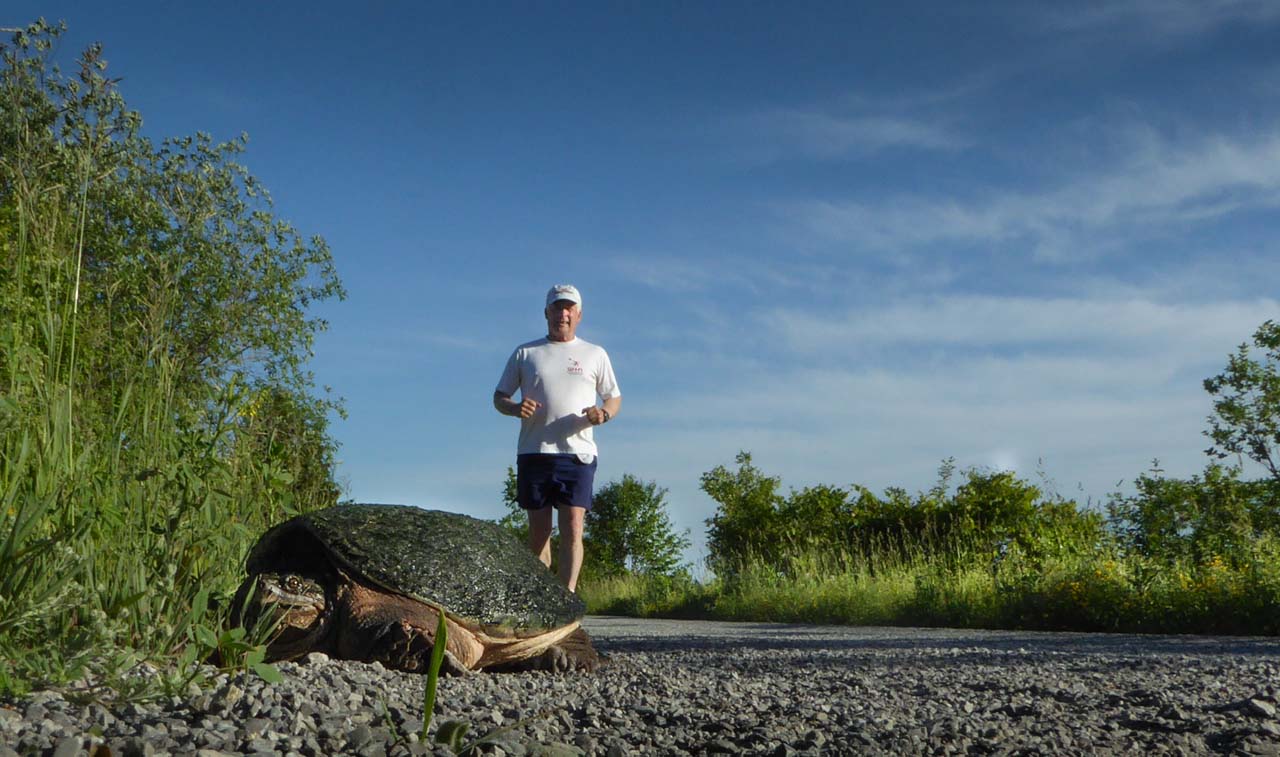| Are
you ready to will yourself forward, to keep your
legs moving to get over the next hill, through
the exposed windy section, survive the heat, and
be diligent enough to stick to your pacing hydration
and nutrition regime? Consider these four steps
to refine your preparation regimen.
Step 1: Think
About How You Want To Treat Yourself.
It is easy to slip into a spiral of negative self-talk
and doubt, when you are facing another 20 miles
of running, you are very tired, and particularly
if things aren't clicking. Pre-determine an emotional
reason for being out there, or a personal theme.
Perhaps it is to inspire your family or kids to
go after their dreams, perhaps it is just to constantly
remind yourself that you have chosen an exceptional
thing to do with your life's journey, or perhaps
it is to remind yourself that you are an amazing
athlete and person for even toeing the line of
such a daunting and monumental race. Bring some
positive thoughts or themes with you from which
you can reflect upon when the going gets tough.
They can also lift you to another level of performance
when things are on track and progressing well.
Decide that no matter how things are progressing,
your are going to treat yourself with respect,
and speak kindly to yourself.
Step 2: Learn
The Run Course.
If you ever had to run an Ironman marathon on
your favorite training route at home, the chances
are you would have a much better chance of success.
You would know every hill gradient and duration,
where the shade is, the wind tendencies, cambers,
down hills to expect, rough terrain, etc. You
would have a good sense of how to appropriate
your energy, where you need to be exceptionally
strong and focused. You would know how to push
through the challenging areas because you have
done it before. The goal for any major event is
to give yourself as much of the "home-course"
advantage as possible. Optimally, you would try
to do a training camp on the course in prior months
to learn and master the course. If that isn't
possible, tour the course on race week and run
portions of it in your race-taper sessions. Ride
the marathon course on your bike. Take a map and
pen and write notes on what you see out there.
Try and identify landmarks along the way that
are at critical sections of the course. Your goal
is to be able to retire to your hotel room at
the end of the day and have a fairly clear picture
of the course in your mind, with some notes handy
to reflect upon.
Step 3: Prepare
Yourself For The Effort.
Having learned the racecourse, revisit some of
your best training efforts from back home and
review how they felt as you progressed. Next,
place that mental image of your training efforts
on specific areas of the Ironman marathon course.
It is important to be realistic, but not fearful,
of the effort it will take to tackle the marathon.
Be realistic about your skills and abilities as
well. It is a recipe for disaster for you to expect
to greatly exceed anything you have done consistently
in training, and will be deflating if you are
missing the mark. Mentally rehearse what it will
feel like to have a steady and solid day out there,
the level of effort required and the biomechanical
elements of your best Ironman marathon stride.
How will you feel at three miles, six, twelve,
twenty and so on? Create some biomechanical "cues"
to keep you moving well, such as "quick,
light", "strong and forward", "rhythm
from the arms", or "loose shoulders,
open lungs". These cues are personal and
should be meaningful for you. Share them with
your supporters, as they will help give you energy
when you are in the heart of the marathon.
Step 4: Review
Your Pacing And Nutritional Strategy.
When blood glycogen gets low from caloric deficiency,
it's easy for the mind to start playing tricks
on you. You might suddenly not feel hungry or
thirsty, or become very emotional, or very dull,
classic signs of "bonking". It is critical
to have a pacing strategy supported by a nutritional
strategy, and to review in your mind beforehand.
When will you eat, and where? Learn where the
aid stations are, decide if you will walk them
or not, and how it will feel to get running again
after a stop. Running your correct, aerobic, and
patient pace (practiced in training) will help
conserve blood glycogen, so check your time splits
along the way to make sure you are on track. Think
about the tell-tale signs of bonking and how you
will problem-solve to work through a bonk if it
happens- by slowing the pace, or walking, and
getting some extra hydration and nutrition in.
Step 5: Have
A Re-Focusing Strategy
Inevitably, over 140.6 miles, you will go through
a hard, extra challenging area of the race, and
the chances are it will be late in the bike, and
intermittently through the run. The best athletes
are great at focusing and staying on task, and
they are also great at problem solving when things
aren't going well. If you get blisters, a cramp,
bonk, or bloated, your goal still remains doing
the best job possible given the set of circumstances
you are facing. Try and remain calm no matter
what, get back on task as soon as possible, and
maximize what you can do right now, rather than
stressing about what you can't do.
LifeSport head coach Lance Watson
has coached a number of Olympians, Ironman and
Age Group champions. Lance and the coaches at
LifeSport enjoy working with athletes of all ages
and abilities.
|










219.jpg)










500.jpg)




